The Hyundai Ioniq 5 has redefined what an electric crossover can be blending futuristic design, ultra-fast charging, and family-friendly practicality. Yet as the EV landscape evolves rapidly in 2025, more drivers are questioning whether the Ioniq 5 is still the smartest choice for their money. With new models offering longer ranges, smarter software, and more competitive pricing, the market for electric SUVs has become a battleground of innovation.
If you’re exploring alternatives to the Hyundai Ioniq 5, you’re not alone. Many buyers are comparing models like the Tesla Model Y, Kia EV6, and Volkswagen ID.4 to see which delivers the best balance of performance, technology, and everyday usability. This guide dives deep into the top 10 best alternatives to the Hyundai Ioniq 5 in 2025, helping you discover which EV truly matches your lifestyle whether you prioritize range, design, or the latest in connected tech.
Contents
- Tesla Model Y – The Tech Leader Among EV Crossovers
- Kia EV6 – The Closest Sibling Rival
- Ford Mustang Mach-E – The American Contender
- Volkswagen ID.4 – The Balanced Choice
- Nissan Ariya – Comfort and Elegance
- Polestar 2 – The Scandinavian Minimalist
- Chevrolet Blazer EV – The Newcomer With Range Power
- Volvo XC40 Recharge – Compact Yet Luxurious
- Rivian R1S – Adventure-Ready Electric SUV
- Toyota bZ4X – The Practical Everyday EV
- Comparison Overview & Buyer’s Guide
- Conclusion
Tesla Model Y – The Tech Leader Among EV Crossovers
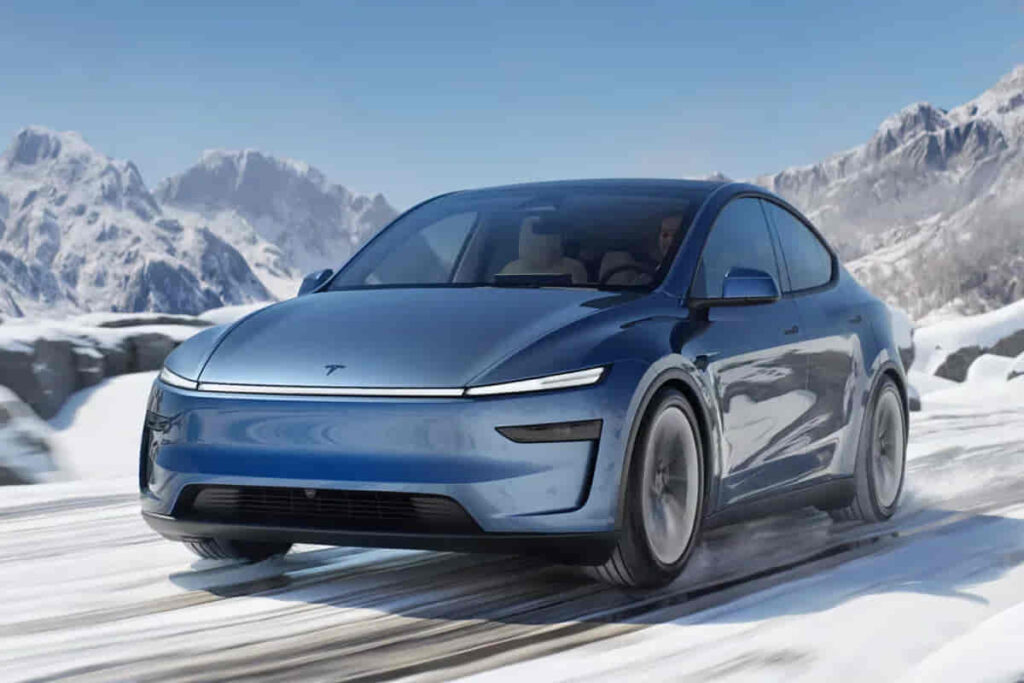
When discussing alternatives to the Hyundai Ioniq 5, the Tesla Model Y inevitably takes the spotlight. Built upon Tesla’s proven EV architecture, the Model Y blends efficiency, performance, and cutting-edge technology into one seamless experience. For 2025, Tesla has refined its crossover with longer range options exceeding 330 miles, faster Supercharging capabilities, and an upgraded cabin that feels more connected than ever.
The Model Y continues to dominate conversations around electric SUVs thanks to its over-the-air updates and integrated software ecosystem, which constantly improves vehicle performance and user experience. Compared to the Ioniq 5, Tesla’s advantage lies in its mature charging infrastructure the global Supercharger network that eliminates range anxiety for long-distance drivers.
Still, the Model Y’s minimalist interior and firm suspension may not suit everyone, especially those who value the Ioniq 5’s comfort and softer ride. Yet for tech-savvy drivers who see their vehicle as an evolving digital device on wheels, the Model Y remains one of the most compelling alternatives to the Hyundai Ioniq 5 a benchmark that continues to set the pace for the EV industry.
Kia EV6 – The Closest Sibling Rival
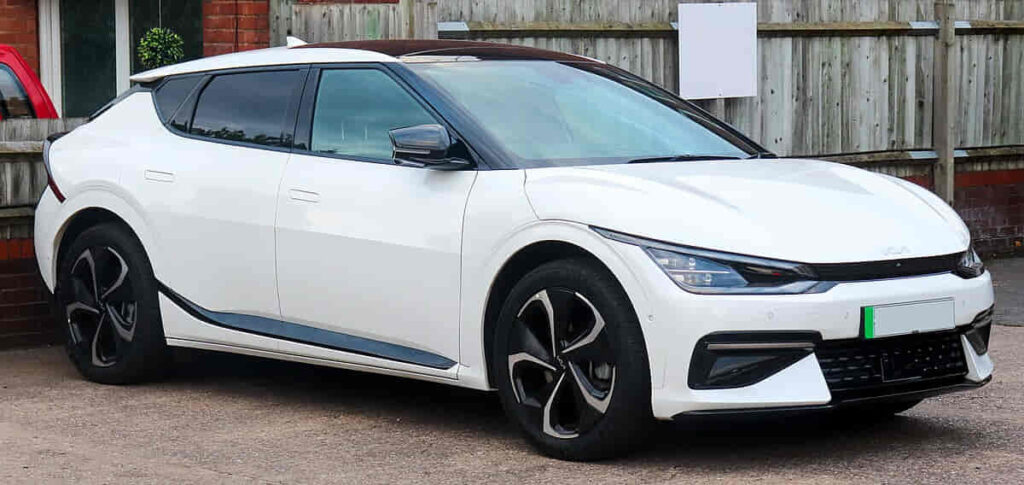
Among all alternatives to the Hyundai Ioniq 5, the Kia EV6 stands out as its most direct competitor and, in many ways, its mirror image. Sharing Hyundai’s advanced E-GMP platform, the EV6 offers the same 800-volt architecture that enables ultra-fast charging, taking the battery from 10% to 80% in less than 20 minutes. Yet Kia has infused the EV6 with a sportier attitude, both in design and driving dynamics, that appeals to those who crave a more engaging electric experience.
Where the Ioniq 5 feels calm and futuristic, the EV6 feels alive and athletic. Its low-slung stance and sharp contour lines signal performance, while the GT version pushes acceleration to sports-car levels reaching 0–60 mph in just 3.4 seconds. Inside, the EV6 balances digital sophistication with driver focus, featuring curved dual displays and an intuitive layout that feels purpose-built for performance enthusiasts.
For 2025, the EV6’s software updates, improved range, and enhanced safety suite make it one of the most balanced alternatives to the Hyundai Ioniq 5 especially for drivers who want similar tech with a bit more adrenaline in every mile.
Ford Mustang Mach-E – The American Contender
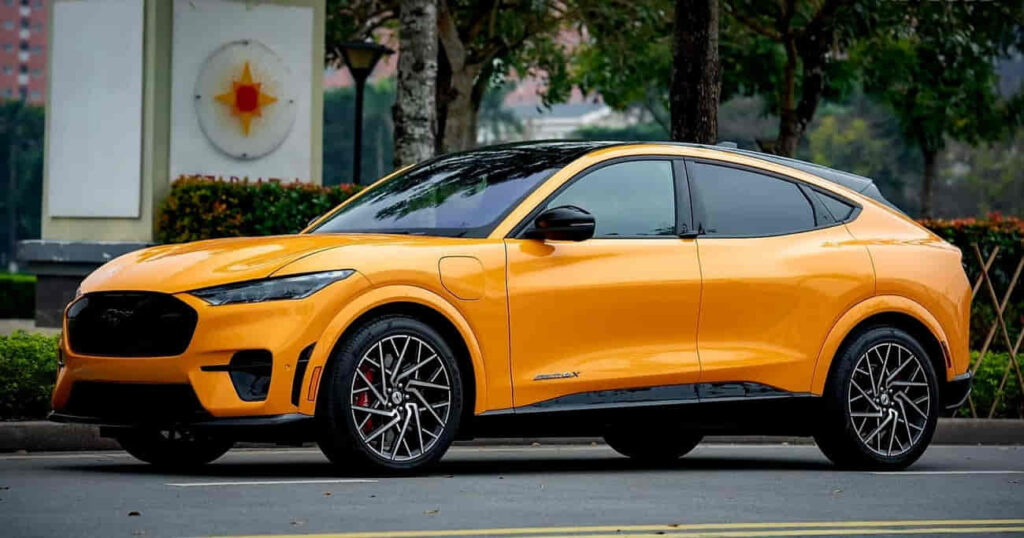
If you’re exploring alternatives to the Hyundai Ioniq 5, the Ford Mustang Mach-E brings a distinct flavor to the electric crossover market one that blends American muscle heritage with modern EV innovation. While the Ioniq 5 emphasizes futuristic minimalism, the Mach-E channels its performance roots, offering a driving experience that feels powerful, confident, and emotionally charged.
In 2025, Ford’s updates to the Mach-E have made it even more compelling: improved battery efficiency, faster DC charging, and refined ride comfort make it far more versatile than early versions. The GT Performance Edition, in particular, bridges the gap between practicality and thrill, with instant torque and sharp cornering that give the Mach-E an unmistakably dynamic character.
Inside, the cabin design feels bold and driver-centric. Ford’s SYNC 4A infotainment system delivers fluid responsiveness, while over-the-air updates keep software performance on par with rivals. Though its range remains slightly below that of the Ioniq 5, the Mach-E’s charisma, driving emotion, and brand legacy make it a truly distinctive choice among the best alternatives to the Hyundai Ioniq 5 especially for those who want a little “mustang spirit” in their electric drive.
Volkswagen ID.4 – The Balanced Choice
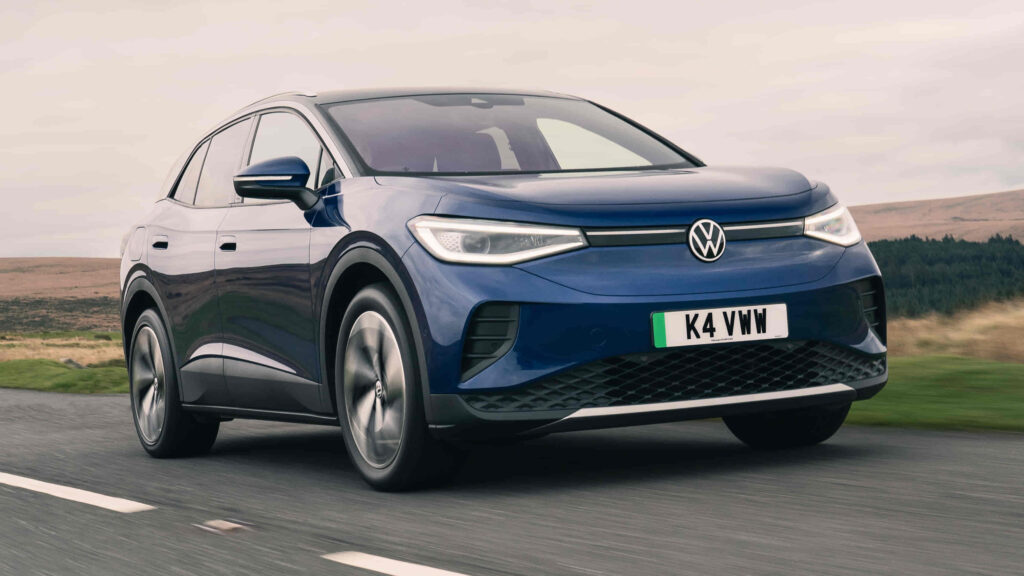
For drivers who value balance over flash, the Volkswagen ID.4 stands as one of the most rational alternatives to the Hyundai Ioniq 5 in 2025. Built with the signature precision of German engineering, the ID.4 emphasizes everyday usability, comfortable handling, and efficiency rather than pure performance. It’s the kind of electric SUV designed to fit seamlessly into family life, with enough sophistication to feel modern but without overwhelming tech complexity.
The 2025 update brings meaningful improvements to range and interior refinement. Depending on configuration, the ID.4 now delivers up to 300 miles on a single charge and supports faster DC charging closing the gap with higher-end competitors. Inside, Volkswagen’s new infotainment interface feels cleaner and more intuitive, addressing one of the few criticisms of earlier models.
Where the Hyundai Ioniq 5 wins in futuristic aesthetics, the ID.4 counters with understated practicality and European composure. Its calm ride, generous cabin space, and accessible pricing make it a top pick among alternatives to the Hyundai Ioniq 5, especially for families or commuters seeking a grounded, dependable EV experience backed by a trusted legacy brand.
Nissan Ariya – Comfort and Elegance
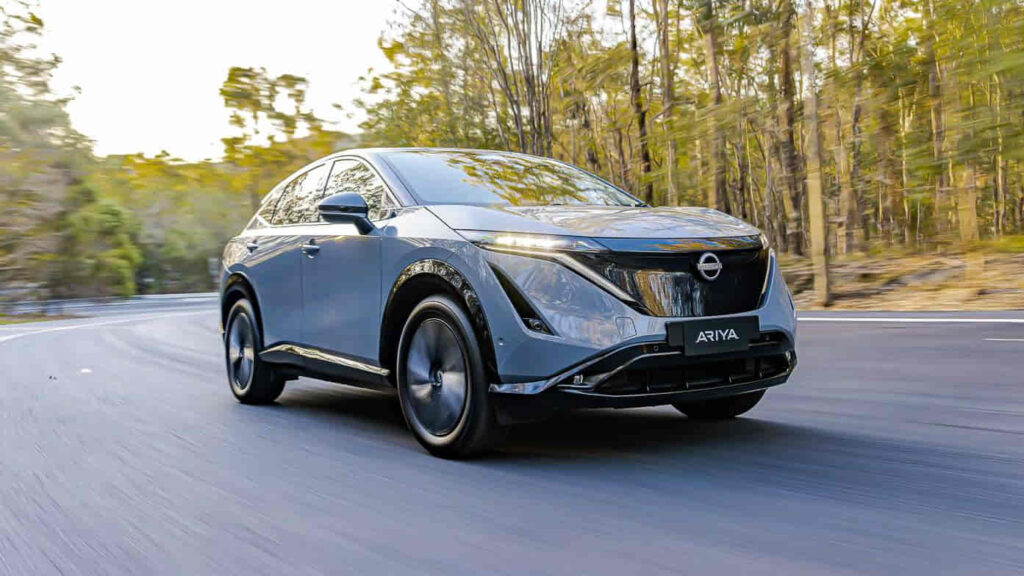
For those seeking a more refined and serene driving experience, the Nissan Ariya emerges as one of the most graceful alternatives to the Hyundai Ioniq 5 in 2025. It represents Nissan’s evolution from the pioneering Leaf into a more premium, design-conscious electric SUV one that prioritizes comfort, interior serenity, and a calm sense of control over raw performance.
Inside, the Ariya feels more like a modern lounge than a vehicle. Its open cabin layout, soft ambient lighting, and high-quality materials create a sense of quiet sophistication that sets it apart from the tech-heavy competition. Nissan’s latest ProPILOT Assist 2.0 system enhances long drives with semi-autonomous capability, while its e-4ORCE all-wheel-drive system ensures stable and confident handling in all conditions.
Although the Ariya doesn’t chase the fastest charging times or the longest range in its class, it shines in balance and refinement offering what many drivers truly want: peace of mind. For EV buyers who value elegance, comfort, and reliability in equal measure, the Nissan Ariya stands tall among the most well-rounded alternatives to the Hyundai Ioniq 5, blending emotional appeal with practical engineering.
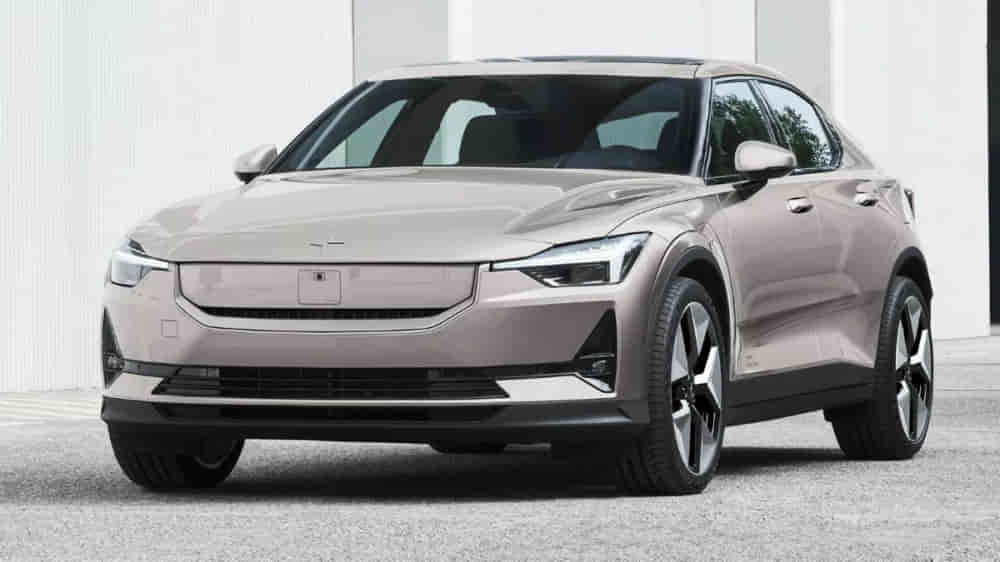
Among the many alternatives to the Hyundai Ioniq 5, the Polestar 2 stands out not through loud design or aggressive performance, but through the quiet confidence of Scandinavian minimalism. Developed by Volvo’s electric performance sub-brand, the Polestar 2 captures a rare blend of sustainability, craftsmanship, and digital precision appealing to drivers who appreciate simplicity with purpose.
The 2025 Polestar 2 refines its formula even further, featuring improved range, faster charging speeds, and a shift to rear-wheel drive for better efficiency and balance. Its clean interior design, dominated by sustainable materials and subtle ambient tones, radiates a sense of calm sophistication. The Google-integrated infotainment system remains one of the most intuitive in the EV segment, offering seamless connectivity and real-time navigation optimized for charging stops.
While the Ioniq 5 feels futuristic and expressive, the Polestar 2 delivers quiet confidence a car that doesn’t shout for attention but rewards those who notice the details. For design purists and technology enthusiasts alike, it’s a thoughtfully engineered contender that easily earns its place among the best alternatives to the Hyundai Ioniq 5, embodying a refined balance between performance and restraint.
Chevrolet Blazer EV – The Newcomer With Range Power
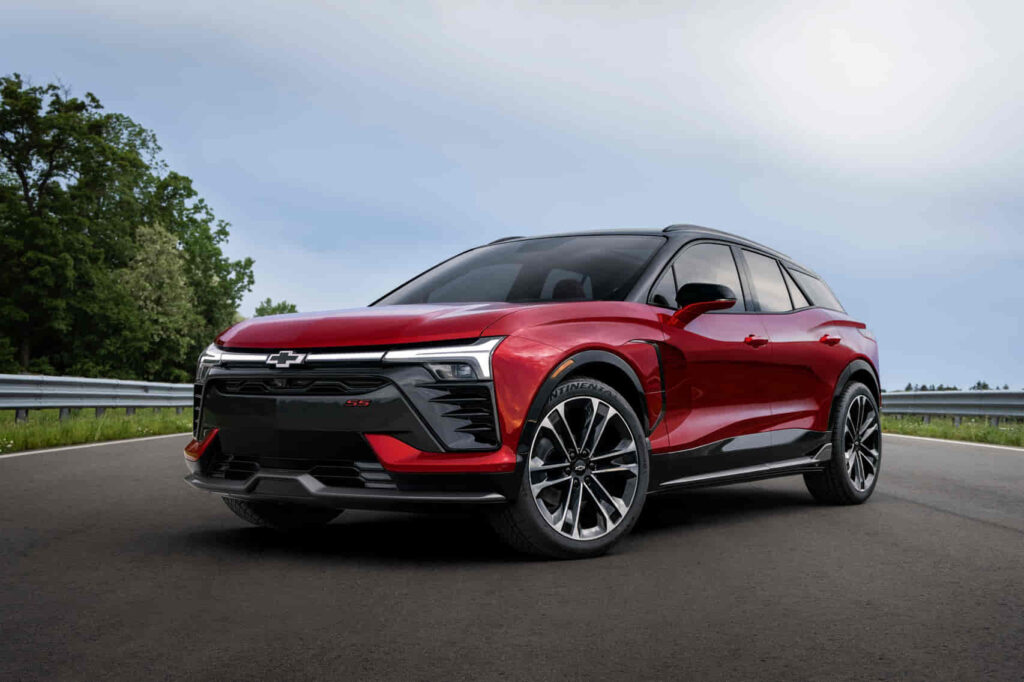
In the fast-growing field of alternatives to the Hyundai Ioniq 5, the Chevrolet Blazer EV enters the arena as a bold newcomer that redefines expectations for range and versatility. Built on GM’s advanced Ultium platform, the Blazer EV showcases how American automakers are evolving beyond traditional gasoline roots to embrace electric performance and innovation at scale.
The Blazer EV’s design is muscular yet modern, with strong lines that reflect its confident personality. Its real power, however, lies beneath the surface. With a range of up to 320 miles, rapid DC charging, and a variety of drivetrain options including front-, rear-, and all-wheel drive Chevrolet offers flexibility that few EVs in its class can match. The SS performance trim delivers up to 557 horsepower, transforming the Blazer EV into one of the most thrilling electric SUVs on the market.
Inside, the tech-forward cockpit combines digital sophistication with ergonomic comfort, featuring GM’s latest infotainment interface powered by Google built-in. For those seeking a practical yet powerful electric SUV, the Chevrolet Blazer EV proves that newer doesn’t mean untested it means ambitious. It stands among the most capable alternatives to the Hyundai Ioniq 5, fusing range confidence with performance-driven design.
Volvo XC40 Recharge – Compact Yet Luxurious
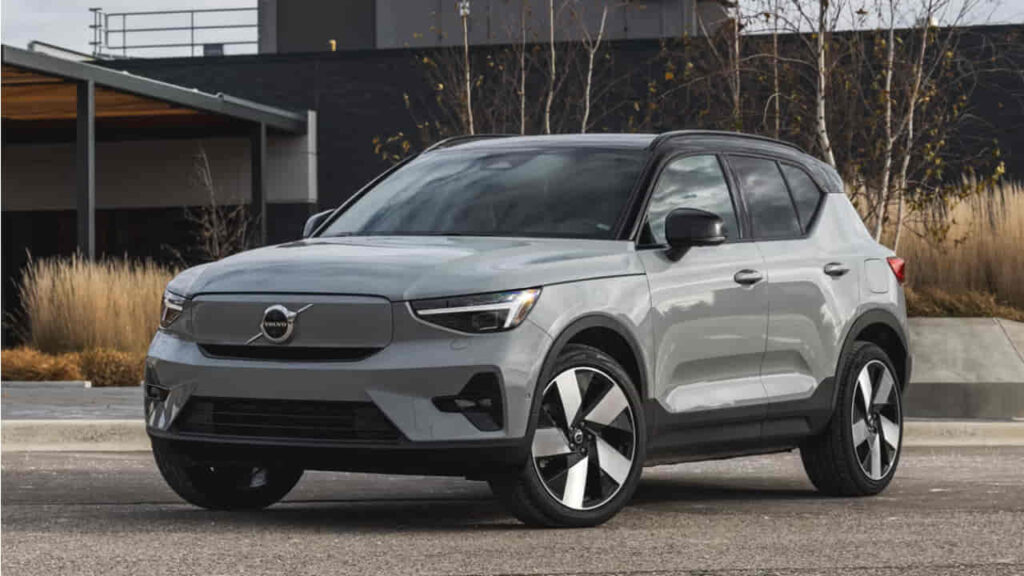
For buyers exploring premium alternatives to the Hyundai Ioniq 5, the Volvo XC40 Recharge delivers a refined blend of luxury, safety, and everyday practicality in a compact form. Rooted in Volvo’s Scandinavian philosophy of simplicity and responsibility, the XC40 Recharge embodies understated elegance while offering the solid engineering and reliability that have long defined the brand.
In 2025, the XC40 Recharge continues to evolve with extended range, faster charging, and a redesigned powertrain that now favors rear-wheel drive for improved efficiency. Its interior feels meticulously crafted soft-touch materials, ambient lighting, and sustainable textiles create a calm and modern atmosphere. The Google-based infotainment system integrates seamlessly with daily routines, offering smart route planning that considers charging stops and weather conditions.
While the Hyundai Ioniq 5 excels in futuristic design and open space, the XC40 Recharge speaks to those who value refinement and heritage. It’s not just an EV it’s a statement of quiet confidence. For drivers who appreciate craftsmanship, safety innovation, and timeless style, the XC40 Recharge remains one of the most sophisticated alternatives to the Hyundai Ioniq 5, proving that luxury can be compact without compromise.
Rivian R1S – Adventure-Ready Electric SUV
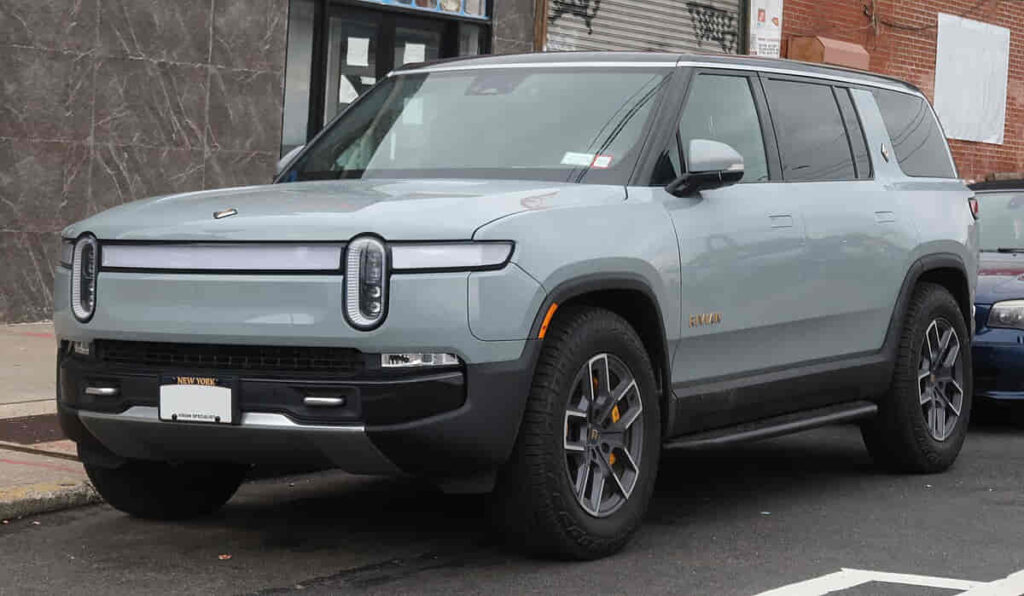
Among all alternatives to the Hyundai Ioniq 5, few embody adventure and innovation quite like the Rivian R1S. Designed for explorers who see roads as optional, the R1S redefines what an electric SUV can do beyond city limits. Its rugged design, immense power, and off-road mastery make it a pioneer among adventure-focused EVs, seamlessly blending luxury with wilderness capability.
Powered by Rivian’s quad-motor system, the R1S delivers exceptional control and traction across any terrain, from icy mountain passes to desert trails. With over 300 miles of range and a robust 14.9 inches of ground clearance, it’s engineered to go where most electric vehicles cannot. Inside, the cabin is a sanctuary of modern craftsmanship combining durable, eco-friendly materials with a high-end aesthetic that feels both adventurous and exclusive.
While the Hyundai Ioniq 5 thrives in the urban environment, the Rivian R1S is built for the unknown. It appeals to drivers who value self-reliance, freedom, and capability above all. As electric mobility expands into new frontiers, the Rivian R1S stands tall among the most unique alternatives to the Hyundai Ioniq 5, proving that sustainability and exploration can thrive together.
Toyota bZ4X – The Practical Everyday EV
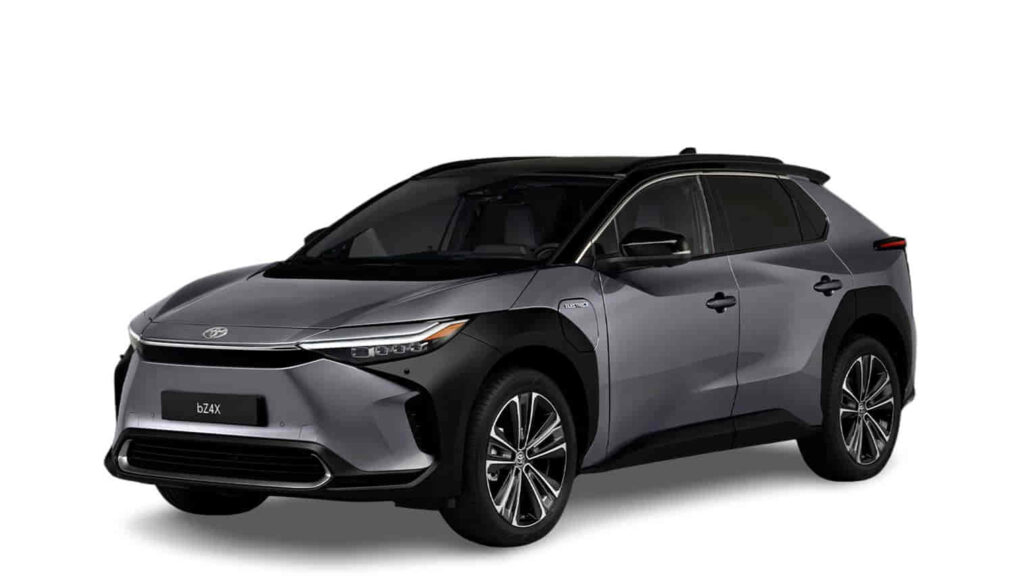
Closing our list of the best alternatives to the Hyundai Ioniq 5, the Toyota bZ4X represents a grounded, dependable approach to electric mobility. Where many EVs chase extreme range or futuristic flair, Toyota takes a more pragmatic route focusing on reliability, efficiency, and ease of ownership. The result is an electric SUV that feels familiar yet refreshingly simple, designed to meet the needs of everyday drivers rather than early adopters.
Built on Toyota’s e-TNGA platform, the bZ4X emphasizes smooth handling, consistent performance, and a predictable driving experience that reflects the brand’s decades-long expertise in hybrid technology. Its modest range and charging speed are offset by a comfortable ride, excellent build quality, and the peace of mind that comes with Toyota’s proven reputation for longevity.
For 2025, subtle software improvements and wider charging compatibility have made the bZ4X more appealing to budget-conscious EV buyers. While it may lack the flashiness of the Hyundai Ioniq 5, it compensates with trust, simplicity, and practicality. For those who prioritize reliability and cost efficiency over cutting-edge aesthetics, the Toyota bZ4X stands as one of the most sensible alternatives to the Hyundai Ioniq 5 an EV made for real life, not just headlines.
Comparison Overview & Buyer’s Guide
Choosing the right electric SUV isn’t just about numbers it’s about lifestyle fit, driving habits, and long-term value. Below is a quick comparison of the leading alternatives to the Hyundai Ioniq 5, highlighting key aspects that influence real-world ownership.
| Model (2025) | Range (mi) | 0–60 mph | Charging (10–80%) | Starting Price (USD) | Key Strength |
|---|---|---|---|---|---|
| Tesla Model Y | ~330 | 4.8s | ~25 min (Supercharger) | $47,000 | Tech ecosystem & performance |
| Kia EV6 | ~310 | 3.4s (GT) | ~18 min | $46,000 | Sporty feel, ultra-fast charging |
| Ford Mustang Mach-E | ~300 | 4.5s | ~30 min | $45,000 | American design & driving emotion |
| VW ID.4 | ~300 | 5.5s | ~28 min | $43,000 | Balance & comfort |
| Nissan Ariya | ~285 | 5.1s | ~35 min | $44,000 | Comfort & premium interior |
| Polestar 2 | ~320 | 4.2s | ~28 min | $49,000 | Minimalist luxury & software |
| Chevrolet Blazer EV | ~320 | 4.0s (SS) | ~25 min | $50,000 | Strong performance & flexibility |
| Volvo XC40 Recharge | ~295 | 4.6s | ~27 min | $53,000 | Compact luxury & safety |
| Rivian R1S | ~320 | 3.0s | ~35 min | $78,000 | Off-road capability & power |
| Toyota bZ4X | ~250 | 6.5s | ~40 min | $42,000 | Practical reliability |
How to Choose the Right Hyundai Ioniq 5 Alternative
Selecting among these alternatives to the Hyundai Ioniq 5 depends on what truly matters to you as a driver.
If you value technology and efficiency, the Tesla Model Y and Polestar 2 excel with advanced software ecosystems.
If driving excitement and sportiness define your preference, the Kia EV6 GT and Ford Mustang Mach-E will speak to your passion.
For comfort and refinement, the Nissan Ariya and Volvo XC40 Recharge offer a serene, high-end experience.
Meanwhile, adventurers and outdoor enthusiasts will find unmatched versatility in the Rivian R1S, while budget-conscious buyers may gravitate toward the Toyota bZ4X or Volkswagen ID.4 for reliability and value.
Ultimately, the key is alignment: matching your EV’s strengths to your lifestyle. Whether it’s daily commuting, family travel, or off-road exploration, these models prove that the Ioniq 5 has strong competition and that 2025 is the year of true electric choice.
Conclusion
As the electric vehicle market matures, it’s clear that the Hyundai Ioniq 5 no longer stands alone. The EV landscape of 2025 offers more diversity, innovation, and choice than ever before—giving buyers the freedom to find an electric SUV that aligns perfectly with their needs. Whether it’s the tech-forward Tesla Model Y, the sporty Kia EV6, or the refined Volvo XC40 Recharge, today’s alternatives to the Hyundai Ioniq 5 prove that competition drives progress.
Each contender brings something unique to the table: some excel in range and charging speed, others in luxury, comfort, or performance. What matters most is choosing the EV that reflects your lifestyle—your daily routes, your priorities, and your sense of identity on the road.
The Hyundai Ioniq 5 set the bar high, but its rivals have caught up quickly. So before making your next electric move, explore these top alternatives, compare what truly matters, and take a test drive that could redefine the way you experience mobility. The future isn’t about one best EV—it’s about finding the best one for you.